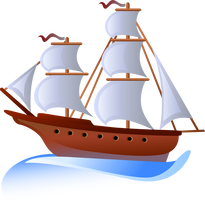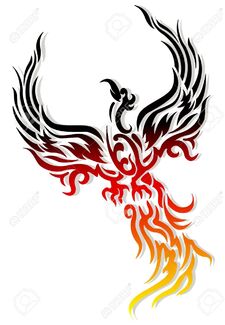 In a recent blog I made a statement to the effect that there were only 7 basic plots for books. It appears that I was right. Experts think that there are seven basic plots for books. I would throw in an 8th, but I’ll get to that later. The idea was developed by someone called Christopher Booker, who carried out research across a wide selection of books and then published his results in a book (what else) entitled “The Seven Basic Plots: Why We tell Stories”, published in 2004. This was no passing fancy. It took him 34 years to write. Amongst his other credits is that he was one of the founders of Private Eye magazine. He has nothing to do with the Man-Booker Prize which is awarded for literature.  As well as the 7 basic plots, Booker came up with the idea of the meta plot, that is the basic structure which the majority of books follow. This breaks down into four distinct phases. Phase one is the call to action, in which the protagonist is drawn into the adventure to come. Some go willingly, like James Bond, while others, like both Bilbo and Frodo Baggins, go less willingly. Phase two is the frustration stage, where the protagonist struggles against the forces arrayed against him (or her) in order to resolve the problems he is faced with and win the day. During this stage they discover their weaknesses, which they must overcome and also, usually, unexpected strengths. In the nightmare phase all hope is lost and all seems to be doomed. The protagonist may come close to death and is certainly in despair, though quite how this works for plot type 5 (see below) I’m not sure. Finally, we reach the resolution stage, where the protagonist, against all odds, wins the day and earns the title of hero. Again I’m not so sure that this works for plot type 6 (also see below). It doesn’t matter how many other characters there are in the book, it is with the protagonist that the reader’s thoughts and emotions ride. If he or she doesn’t succeed, then the story doesn’t succeed. Even if the protagonist dies at the end, their death must be a sacrifice to gain their success. Do you recognise those four phases from the books you read or write? I must admit that I find it hard to think of any book that doesn’t conform to that pattern So, what are the 7 basic plots that Booker identified?  Plot 1. Overcoming the monster. This might be a real monster, such as the Minotaur favoured in Ancient Greek literature, or it may be a figurative one: Big Business, Corrupt Government, Rogue CIA agent, etc. A lot of Greek literature focuses on battling monsters, but it has stood the test of time. H G Wells used it in War Of The Worlds and Michael Crichton in Jurassic Park. The ‘monster’ is also present in stories such as George Orwell’s 1984 and the Jason Bourne and Jack Reacher books. Just because it doesn’t have horns or a tail it doesn’t prevent it being a monster. Plot type 1 is, of course, a staple of the horror story genre: Frankenstein, Dracula, Halloween, Friday The Thirteenth. However, I used it in my World War II series, Carter’s Commandos, where the monster is the Nazi regime in Germany.  Plot 2. Rags to riches. The most obvious (for me) examples are Dicken’s Great Expectations. Aladdin, The Prince And The Pauper etc. First of all the protagonist comes into great wealth before losing it all and then having their fortunes restored after they have learnt a significant lesson. There is usually a moral to the story, especially around hubris and not abandoning one's real self.  Plot 3. The quest. This is much loved by the writers of fantasy novels and I used it in my Sci-Fi series. With the search for the magic sword, or whatever, also comes personal growth. The protagonist never comes out of a quest unchanged in some way. Its origins are as distant as Homer’s Iliad and progress through history with A Pilgrim’s Progress, Lord Of The Rings, Watership Down, etc.  Plot 4. Voyage and Return. Similar, in some ways, to the quest, the protagonist must leave his home in order to achieve something and, again, returns changed in some way. One of oldest versions of this is Homer’s Odyssey, but perhaps the best known of these is the Lord Of The Rings prequel The Hobbit. Other examples include Gulliver’s Travels and The Wizard of Oz. It is the principal feature of this genre that the protagonist isn’t (necessarily) financially enriched by the journey, but is spiritually enriched.  Plot 5. Comedy. Is this really a plot in its own right, I wonder? Comedy can be inserted into almost any plot, even a tragedy if it’s handled correctly. That’s why we refer to “black comedies”. The protagonist is usually a light, cheerful character to whom life frequently hands the dirty end of the stick: a good person to whom bad things happen. However, they stumble along and emerge triumphant at the end, often through luck rather than judgement. Mr Bean or any Norman Wisdom film provides examples.  Plot 6. Tragedy. In Ancient Greek theatre this was the partner of comedy as the Greeks only did two types of theatre. Again, I would dispute this being a plot in its own right. Most stories can include a tragedy or two. The protagonist either has a major character flaw which they are unable to identify in themselves or they commit an act for personal gain which has unforeseen consequences and which spirals out of control. Either way it doesn’t end happily. There are many stories that fit this genre: King Lear, Romeo and Juliet, Macbeth, Bonnie and Clyde, Anna Karenina. This isn’t so popular in modern fiction and film as the public prefers a happy ending, so nowadays the inherent tragedy turns to success in the final chapter. While it was always normal for the protagonist to die at the end of a tragedy it is far more normal, now, for them to live. Not only will they live, they will also get the girl (or boy).  Plot 7. Rebirth. This is the plot for any story in which a villain or an unlikeable character ends up as the hero. It involves the protagonist going through an experience that changes them radically in some way, making them a “new” person. There can also be an element of this in some of the other plots, particularly 3 and 4. Here we find A Christmas Carol (not my alternative version), Beauty And The Beast and Despicable Me. Now we come to my additional plot, Plot 8: Romance. Boy meets girl, boy loses girl for some reason (OK, girl can also lose boy), boy and girl either struggle to get back together, or fight against the inevitable attraction, and finally get back together again at the end of the book (and, of course, there are LGBTQ+ equivalents). This is the territory of Mills and Boon and Barbara Cartland, but has been used by many other authors. In which other genre would Pride And Prejudice fit?  Now, here is the challenge. Can you think of any book that doesn’t fit into one of those 7 (or 8) categories? I have tried and I can’t think of any. If you are an author, have you ever written a book that doesn’t fit into any one of those categories? Would you ever try? An interesting thought is that we might each be living our lives in one of those ways. In other words there are only 8 life stories. That sounds a bit scary, as we all consider ourselves to be unique in some way. However, much as that idea both scares and appeals to me, I have no evidence to back it up so I’ll leave it there. What is of considerable interest to me is this idea of change. The majority of the plot lines described require some form of change to be undergone, in order for there to be a happy ending. This is where the story and real life part company. As a species we aren’t good at changing. If we were we wouldn’t keep repeating the mistakes of the past that lead us into all sorts of messes, up to and including war.  This is where the author often views life through rose tinted spectacles. Their protagonist always undergoes the change, however reluctantly, whatever it is and grows with the experience. In real life this so rarely happens. I’m not saying that it doesn’t happen, because some people really do undergo change, though not always for the better. But for most of us life goes on the same day after day as we curse our bad luck rather than changing our behaviour as a result of experience. So, if there are only 7 (or 8) basic plots for books, why do we keep buying books? After all, once we have read one book from each plot type we have read them all, haven’t we? Well, this is where the skill of the author comes in. He or she makes us believe that their story is both unique and original. "It is the author that makes the difference." Firstly, they will mix and match the plot types to give variation to them. As I suggest above, a quest can also be a journey, and frequently is. Sling in a romance and a bit of personal growth and you tick the boxes of another two types. However, that still limits the number of stories available (Just over 40,000 by my calculation). Yet literally millions of books have been written. It is the author that makes the difference. The skilful author makes you believe, through his or her mix of character and plot, that their story is unique. All the great authors have done this. It is called “finding one’s voice”, in other words saying something different. It is hard to say which authors will find their voice and which will never be heard, because this is down to the reader to judge. But what is clear is that if the reader wishes to find a new voice to listen to they won’t find it by reading what everyone else is reading. A new voice can only come from a new author. If you have enjoyed this blog or found it informative, why not be sure not to miss future editions. Just sign up for our newsletter - and you can get a FREE ebook as well. Just click the button.
0 Comments
Leave a Reply. |
AuthorThis blog is compiled and curated by the Selfishgenie publishing team. Archives
March 2025
|
 RSS Feed
RSS Feed